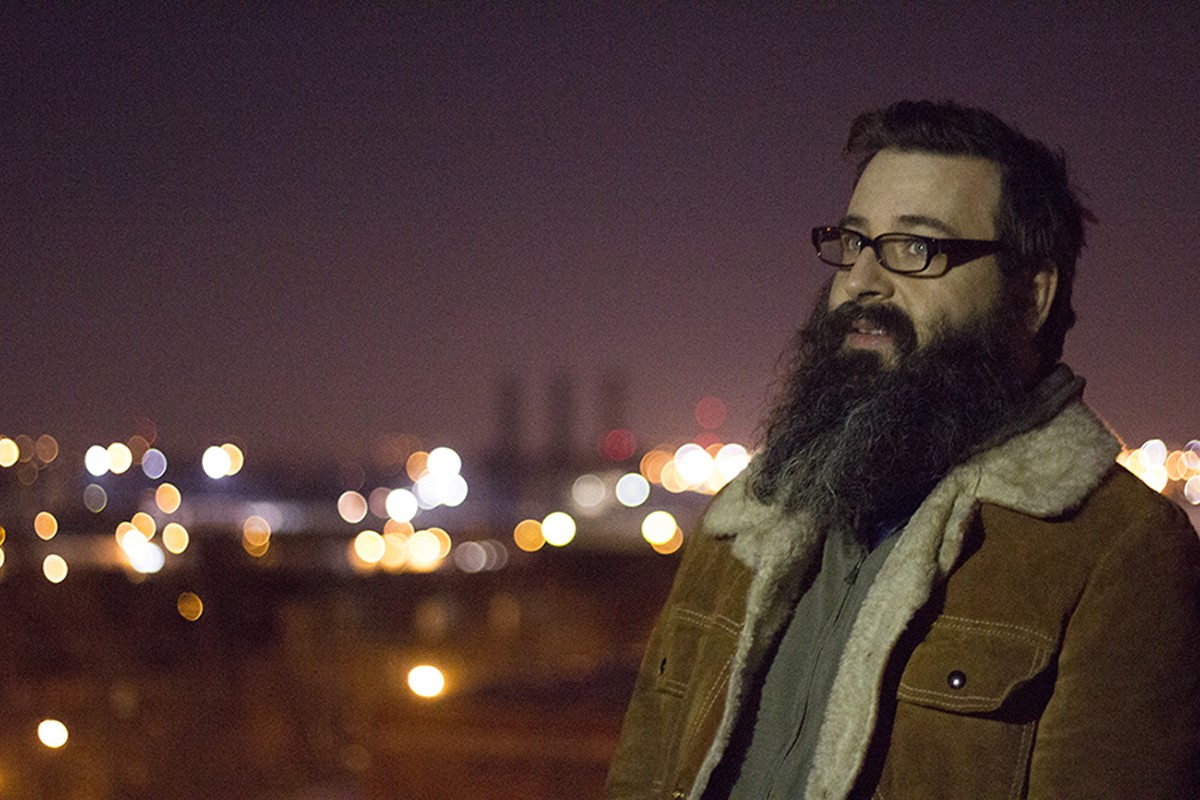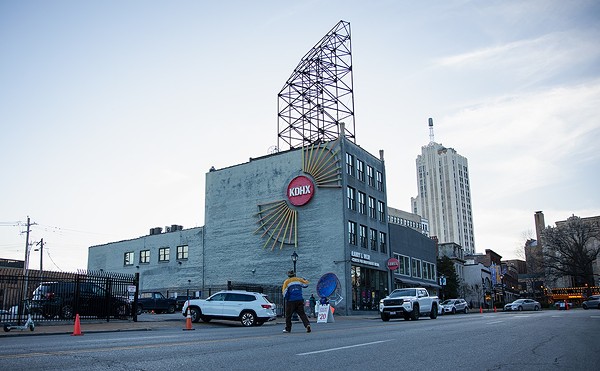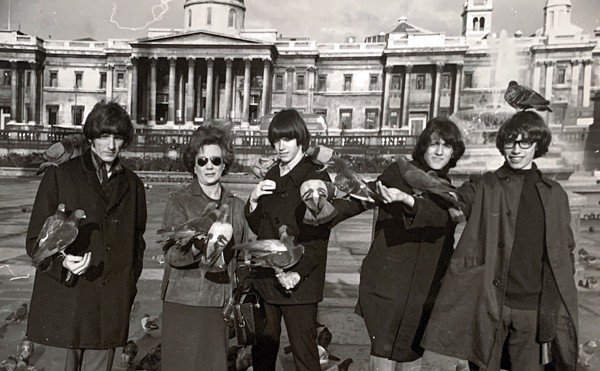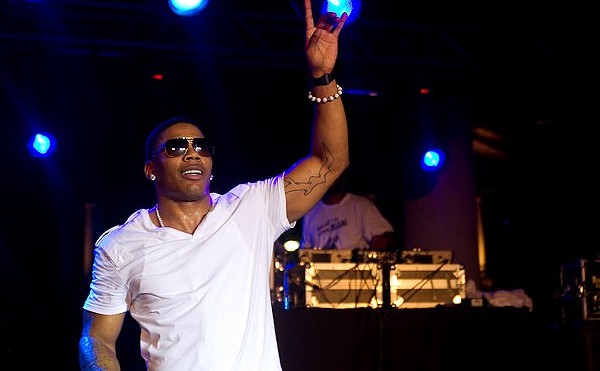The adage that "life imitates art far more than art imitates life" holds enough truth, but when Oscar Wilde penned those words in 1889, he was more than a century ahead of the age of Facebook, Skype and Twitter. With every pathway between our cell phones, laptops and tablets comes potholes and roadblocks — the potential for miscommunication is outright inevitable. But what if those missed connections could be crafted into an artistic statement unto itself?
"It's so seldom that anything happens face to face anymore, or even in real-time," says St. Louis-based sound artist Eric Hall. Yet he hopes to harness those pitfalls on May 14 at the Mad Art Gallery for a joint installation and concert featuring 18andCounting and members of the Alarm Will Sound Ensemble.
In addition to his regular working schedule as an experimental musician, Hall has completed countless commissioned works for the Saint Louis Art Museum, Contemporary Art Museum Saint Louis and the Saint Louis Symphony Orchestra, and was even named the first composer-in-residence at Laumeier Sculpture Park in 2012. Those accolades only scratch the surface for an individual who also actively books and promotes experimental music; to say that he is well-versed in electronic correspondence and social media would be understating the obvious. But when Hall started work with Alarm Will Sound, a modern chamber group with twenty members (not to mention a board of directors) scattered across the United States, he had to take an alternate approach.
"I didn't necessarily anticipate an actual collaboration happening, because their dance card is just so full. They work like crazy across the country," Hall says. "It was very slow to develop because of the nature of how many people there are."
Hall had been more than familiar with Alarm Will Sound, who after receiving support from the Sinquefield Charitable Foundation officially declared St. Louis its home base in 2014. The group approached Hall later that same year to open an event at the Public Media Commons, and loose talks of a collaboration started thereafter.
As Hall proposed ideas with the group at large, he also worked with its management to explore possibilities. But for him, the back-and-forth felt more like throwing suggestions at the wall and waiting at a snail's pace to see if they would stick. He even describes one of his own emails as throwing a "fucking temper-tantrum."
"My way of trying to respond to the frustration and the misunderstandings and communication of organizing something like this was to try to use those tools as a composition," Hall says.
Instead of arranging a piece for live performance, which is Alarm Will Sound's M.O., Hall approached each player to record a short piece using the same methods and devices typically used to share ideas with one another — namely iPhones, tablets or small pocket recorders. He added a simple stipulation: Participants were to record in the same environment where they usually do their business, whether that was on a couch or in a practice space.
"I gave them incredibly simple musical guidelines, but also one of the guidelines was to feel free to disregard every other guideline," Hall says. "For example, if someone sends you an email, you're missing their body language and their tone of voice, so there's a lot of potential for misunderstanding and misinterpreting. So I wanted the musicians to feel free to interpret it however they see fit, because it will presumably be very different from how other people interpret it."
Hall compiled each recording to build ".wav superposition," an audio installation that explores the use of space and proximity through a large circle of several speakers. His instructions to Alarm Will Sound dictate a loose progression with suggested tempos, but length and duration are not specified. The pieces each loop at different lengths, overlapping in numerous ways while listeners can alter their experience by traveling within the circle of speakers, using proximity to focus on one sound more than another.
He shared those same submissions with fellow St. Louis artist Stan Chisholm, better known as 18andCounting, who sourced each piece to build songs of his own. Hall counted on Alarm Will Sound's propensity to transcribe electronic music by artists such as Aphex Twin, Tyondai Braxton and Rashad Becker, to name a few, and connected the two. Conductor and artistic director Alan Pierson worked to arrange 18andCounting's work to be played live by members of Alarm Will Sound and Chisholm's backing band, TheOnlyEnsemble.
"I knew that they do could do Stan justice, and I knew that Stan could definitely bring something to them that, as far as I know, has never existed," Hall says. He wanted to contrast Alarm Will Sound's approach, which he describes as "elegant to a 'T'" with Chisholm's raw, unencumbered style.
As for Hall himself, he compares his planned set to a hall of mirrors where he will process a live performance from selected members of Alarm Will Sound while feeding altered sounds back to them. The collaboration will happen live as Hall's interplay with the players works like a feedback loop. This stripped-down version of Alarm Will Sound will also perform works from its expanded repertoire in a separate set.
"For the most part, [members of Alarm Will Sound] are the raw material, and I will be doing some origami with it and trying to let them respond to that," he says.
After the performance on May 14, Hall will be left with sixteen P.A. speakers, which he painstakingly researched and paid for out of his own pocket, at well over $100 each. That makes the installation a lofty personal investment, especially for a free public showing and performance.
"I found these really cheap P.A. speakers that have MP3 players built in with an SD card slot," he says. "I can't think of why these would exist in the world, but for whatever reason they do, and it turns out to be exactly what I need for this project." Hall adds that he plans on keeping the samples and equipment while he searches for opportunities to bring the experience to more audiences.
And thanks to its deceptively simple nature, Hall's work could easily travel around the world while he stays stationed here in St. Louis, relaying instructions through text messages while walking down the street.






